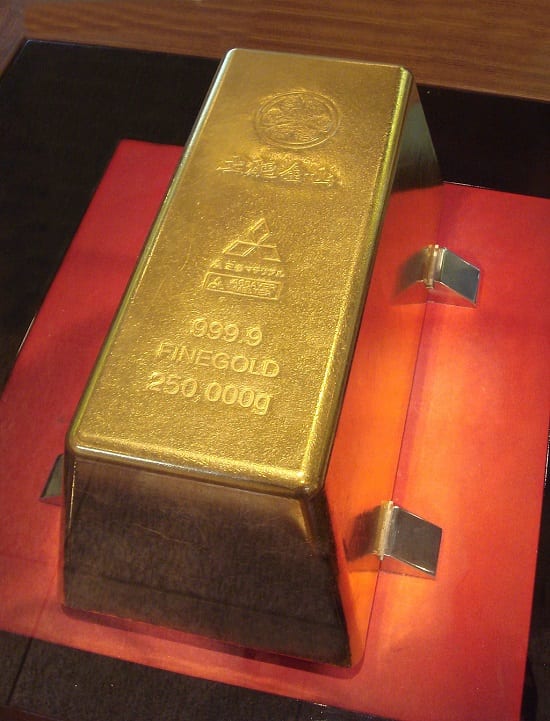Which is a Better Investment – Gold or Diamonds?
09/11/2023Daniel Fisher
Free & fully insured UK Delivery. Learn more
Secure & flexible payments. Learn more

Buyback Guarantee Learn more
Beyond the glitter, gold and diamonds present two compelling options for investors seeking to diversify their portfolios. With their intrinsic value and price stability, they can provide excellent stores of value, especially amid economic uncertainty.
But is it gold or diamonds which would be best for your investment?
Well, both gold and diamonds have their own set of benefits and drawbacks. While gold is a more liquid investment and serves as a hedge against inflation, you might find diamonds more appealing for their ability to preserve value over the long term.
With trillions of dollars worth of gold and diamonds traded globally each year, gold and diamonds remain highly attractive markets.
Let’s explore the options and help you make the best call.
Gold has captivated humankind for millennia. Its luminous yellow shine and malleability lend themselves beautifully to jewellery and ornamentation. But beyond its aesthetic appeal, gold has also long served as a currency and stable repository of value. This is evidenced by its historical role as the basis for monetary systems like the gold standard.
In the modern economy, gold remains a popular investment asset due to some key attributes:
There are several ways for individual investors to gain exposure to gold. The most direct is purchasing physical gold in the form of bullion bars and gold coins. Gold can also be bought through ETFs and mutual funds that track gold prices. Gold mining company stocks offer indirect exposure by tracking their profits from gold deposits. Finally, gold certificates and pooled accounts allow ownership of gold stored in vaults by providers. Each option differs in terms of investment amounts, security, storage and trading flexibility.
So, for investors seeking a stable asset to balance their portfolio, gold shines bright. Its long history as a store of value persists today amid global economic uncertainty. By understanding its investment merits and the options available, gold can play a valuable role in achieving one’s financial objectives.
Free ultimate guide for keen gold investors
Diamonds conjure images of glittering engagement rings and luxurious jewellery. But beyond adornment, diamonds have emerged as an alternative asset class for investors seeking diversification. The diamond investment market has grown steadily over the past decade, driven by rising demand and prices.
Let’s examine the key factors drawing investor interest:
There are several ways to invest in diamonds. The most direct is purchasing physical diamonds of investment quality having certificates from grading labs like GIA or EGL. Diamond investment funds offer a managed portfolio of stones. Companies like Diamond Foundry allow shared ownership of lab-grown diamonds. Overall, diamonds present a compelling option beyond conventional securities.
For investors, the enduring allure of diamonds now extends beyond jewellery to their investment potential. By understanding diamond quality, market dynamics and investment options, one can realise stable portfolio returns.
Now that we have covered the investment case for gold and diamonds independently let us do a head-to-head comparison across seven key parameters. This will help you to gain a rounded perspective on their relative merits as asset classes.

As the world stands on the precipice of another major economic crisis, the spot price of gold has already crossed $1,900 per ounce of gold. These price rises are driven by investors rushing to hedge their risks and move their money to gold.
Theprice of diamonds varies based on quality, from around $2,500 per carat for generic stones to over $50,000 per carat for very rare diamonds. Over the past 25 years, gold prices have risen around 547%, while diamond prices are up about 200%.
Gold prices fluctuate based on factors like inflation, US dollar movements, geopolitics, central bank policies, and supply-demand dynamics. Diamond prices also follow supply-demand dynamics, being influenced by consumer demand growth in major markets.
Examining volatility is crucial to ascertain the risk profile of an asset. Gold prices can see significant swings, moving 10-20% within a year. Diamond prices tend to be more stable, moving in a narrow 5-7% range annually.
Gold’s volatility stems from it being traded actively in futures markets by speculators. Diamond prices are less swayed by financial markets, being dependent on consumer jewellery demand. Their pricing is also controlled by a few large players like De Beers and Alrosa.
So diamonds edge out gold in terms of price stability due to their insulation from financial speculation.
Physical gold investments have an intrinsic value that has been around for thousands of years. Gold is perceived as a store of value and a safe haven during times of economic adversity.
Other asset classes do provide quick returns over the short term. However, there is a good degree of volatility associated with these.
Gold is seen as a stable, solid precious metal that has intrinsic value and delivers healthy returns over the long-term. Let us consider the global stock markets. During a stock market crash, the value of your investments can fall to zero. But this can never happen to gold.

A large gold bar can provide gold at a cheaper price per gram
Liquidity refers to the ease and speed with which an asset can be bought or sold without impacting its price. Gold offers the highest liquidity among commodities, with highly active futures and bullion markets enabling easy entry and exit.
Diamonds are relatively illiquid – it can take months to find buyers for large individual stones or portfolios. The market is not as organised as gold, relying on dealers and auctions. However, fund investments provide exposure to diamond markets without direct liquidity concerns.
Overall, gold scores higher in terms of transactional liquidity owing to its organised market structure. Diamond values can be far more subjective than gold, leading to the possibility of being underpaid for a diamond or receiving very varied quotes.

Over the past 50 years, gold has delivered average annual returns of around 7-11% based on historical data. Diamonds have seen steadier price appreciation of 5-7% annually over the last 20 years.
Going forward, gold returns will depend on key drivers like inflation, US dollar movements and central bank policies. Gold price forecasts suggest an average of 7% per year. For diamonds, growth in emerging markets and supply constraints point to positive gains of 4-6% annually.
Based on historical data and forward-looking projections, gold enjoys a slight edge in expected returns over diamonds over the medium to long term. Investment timeframe is a significant consideration however.
Holding gold for a relatively short period like 1-2 years presents the risk of the price declining, whereas diamond appreciation is more consistent. In this respect, those with short term investment horizons need to be lucky with timing their gold investment or may be better buying diamonds.
So, in summary, while diamonds offer steadier prices and moderate returns, gold provides higher volatility and the potential for stronger gains. An investor’s risk appetite and return objectives will inform which asset is more suitable for their needs.
The diamond market has had its fair share of negative publicity, owing to ethical issues of exploitation of poor labourers and employment of children in the industry.
The ‘blood diamonds‘ controversy is still around, and imports of diamonds to the UK and the European Union from South Africa and other diamond-producing countries are highly regulated. As an investor, you need to be abreast of these issues surrounding the trade. Gold, on the other hand, has a significantly lower social impact.
Whilst there are environmental concerns, these are on the delcline in recent years. It has been around for thousands of years, and currently, the gold market is extremely transparent and structured.
As a UK investor, you can reap good benefits by investing in gold. Gold bars and coins available in the UK are VAT-free, as they are manufactured using investment-grade gold.Coins that are legal tender in the country also offer the added advantage of the exemption from Capital Gains Tax. Investments in precious stones like diamonds do not carry such benefits.
Gold suits investors comfortable with volatility seeking medium to long-term gains. Its liquidity allows it to react to market shifts. Gold serves as an inflation hedge over 5-10-year horizons.
On the other hand, diamonds appeal to conservative investors focused on capital preservation. Their stable value over decades makes them ideal for long-term, multi-generational wealth storage.
However, diamond investing is risky for non-experts. The opaque diamond pricing and illiquidity mean losses can happen. Gold offers more structure as a market with transparent pricing.
The ideal approach is to blend exposure based on risk appetite and goals. Gold provides macroeconomic linkage, while diamonds offer market insulation. Together, they enhance portfolio stability and optimisation.
Rather than an either-or, wise investors can harness the combined potential of these precious commodities. A prudent mix of gold and diamonds makes your asset portfolio shine bright.
Our automated portfolio builder will provide suggestions based on various investment objectives.
When investing in gold, determine your allocation based on risk tolerance, around 5-10% of your portfolio. Choose physical gold or indirect exposure through ETFs and funds. Buy physical gold only from reputable dealers like Physical Gold at fair prices. Understand market dynamics like inflation that impact gold pricing. Store securely to mitigate theft.
For diamonds, develop expertise in assessing diamond quality on the 4Cs scale. Define investment goals for clear decision-making. Only buy from established dealers to avoid overpaying. Inspect diamonds personally and pre-purchase if possible.
Build a diversified portfolio of stones rather than a single diamond. Understand diamond valuation factors like rarity. Plan for selling given lower liquidity. Insure and store securely.
Following prudent practices ensures successful investing in these alternative assets while optimising returns.
If you are wondering how to diversify your investments across asset classes, please call our investment team. A member of our team can assist you with an impartial perspective on the right investments to make and also discuss the merits and demerits of investing in diamonds. Call us today on (020) 7060 9992 or drop us a line via our website.
Gold suits those with 5-10-year investment horizons targeting inflation-beating gains. Diamonds work better for multi-generational wealth preservation, needing stable value storage over decades. Blending both provides portfolio balance across timeframes.
Not necessarily. Gold has industrial uses, conducts electricity, and has monetary attributes. Diamonds gain value from scarcity and consumer demand. In terms of investment utility, gold provides more liquidity and diversification. Diamonds offer long-term stability.
Platinum and palladium are more rare than gold currently but have lower investment values per ounce due to lower demand. Silver offers a higher potential upside through volatility, albeit with higher risks. Rhodium and iridium are also precious metals priced higher than gold.
Equities in high-growth companies, prime real estate in top locations, artwork and collectables have historically delivered higher long-term returns than gold. But gold acts as portfolio insurance during economic crises when other assets decline. Cryptocurrencies offer massive upside potential but with higher risks.
Live Gold Spot Price in Sterling. Gold is one of the densest of all metals. It is a good conductor of heat and electricity. It is also soft and the most malleable and ductile of the elements; an ounce (31.1 grams; gold is weighed in troy ounces) can be beaten out to 187 square feet (about 17 square metres) in extremely thin sheets called gold leaf.
Live Silver Spot Price in Sterling. Silver (Ag), chemical element, a white lustrous metal valued for its decorative beauty and electrical conductivity. Silver is located in Group 11 (Ib) and Period 5 of the periodic table, between copper (Period 4) and gold (Period 6), and its physical and chemical properties are intermediate between those two metals.